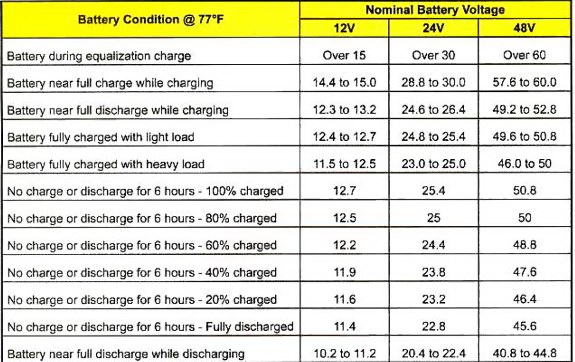There isnít really a way to determine how much charge capacity is holding really, other than running the battery and seeing how long it holds the voltage for.
Most digital controllers have a voltage reading on them these days if you dont have a multimeter.
Youíll soon know by the voltage reading though, how long the charge is holding.

I agree. If the batteries are quick to charge and then go flat quickly, the batteries have lost capacity, probably due to sulphation.
Although CTEK have a battery rejuvenation mode, it very rarely works to expectations.
Starter batteries can be charged and then put on a load test to identify its condition. A standard lead acid battery can't be tested this way.
You could try for warranty, but most manufacturers won't action the warranty on a lead acid battery used for wfp. Basically, the batteries are worn out.
A lead acid leisure battery needs to be fully recharged asap after use to maintain it in a healthy condition. The trouble is that alternator charging doesn't fully recharge a leisure battery. I appreciate that the flatter a leisure battery gets, the higher the recharge rate in amps, but recharging at a high amperage will not do the battery any good. Numax told me once that a leisure battery shouldn't be charged any faster than 10% of its capacity. So a 105 amp Numax should only be charged at a maximum of 10 amps.
My experience is that if we have used 20amps of battery charge by the end of the day, my alternator will only be charging the leisure battery at around 8 amps on the way home. If I'm10 miles away from home and my journey takes me 20 minutes, I have only replaced 3 amps, leaving a deficit of 17 amps. If I return to the same area the following day, theory says that I should charge my leisure battery by another 3 amps, but this would still leave me in deficit before I started my first job. The trouble is, we are taking out a little more each day than we are returning. In time the glass is going to be empty, although it might take time, as a flatter battery charges quicker than a nearly full one.
And here's the next problem; The closer a battery is to full charge, the lower the charge rate the battery will accept. We can't get away from the article in an Australian RV magazine. It will take a road trip of 750km to fully recharge a leisure battery in a motor home.
You put up a photo of the batteries you use once. Back then I checked the battery spec on the NCC verified battery scheme, and if I remember correctly, the manufacturers gave it 80 recharge cycles at a depth of discharge of 50%. I'd be looking at a battery with 200 recharge cycles at 50% DOD.
